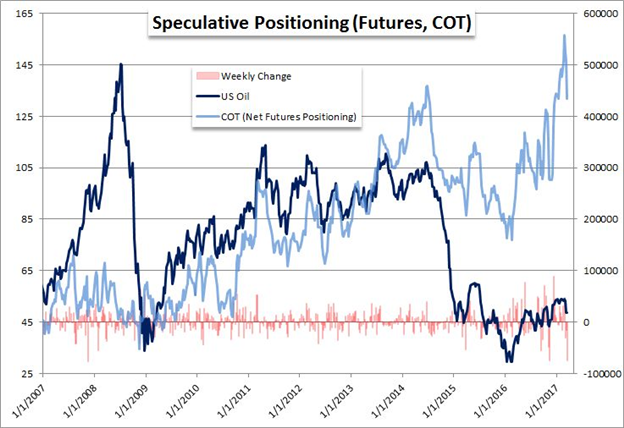Talking Points:
- The market's tides do turn over time, but conviction and skepticism of their consistency can run to the extremes
- Contrarian views have their place amid herd mentality but they can also draw unrealistic conclusions and timing
- We weigh the view of conviction versus contrarian on the S&P 500, crude oil prices and general market volatility
See how retail traders are positioning in the S&P 500, oil and the FX majors using the DailyFX SSI readings on the sentiment page.
Stones are often cast from opposite ends of the trading spectrum. There are those that believe those with a skeptical eye to prevailing market trends are naysayers that will always find themselves on the losing end of probability. On the other side of the hall is the perpetual contrarian that believes throwing in with long-in-the-tooth trends is complacency that begs for a sweeping speculative cleanse. Which side is right? Rarely are extremes the norm; and therefore, commitment to such views can inevitably lead traders to consistent and/or substantive losses. Flexibility in opinion is needed in markets that change, and that is how we can work to keep probabilities in our favor.
Contrarianism in itself is not a losing concept. While prevailing trends are the most likely sight in the market (whether up, down or flat), there are periods of fluctuation and even reversal. Entertaining an opposing view to prevailing market momentum can put traders in a mind frame that helps to identify moves that are based on temporary or explicitly speculative views that are destined for a quick or dramatic change in course. There is no magic measure to tell us whether we should lean towards skeptic or believer with existing trends, but thorough analysis can help us to establish our convictions - whether that be with or against the current.
One of the first means to assessing our view relative to crowd is determining what our target for assessment is: views in the financial media and social outlets; speculative positioning; actual prices action? For market pricing itself, there is always an extreme, but calling its boundaries often pushes traders to look for justification rather than evidence when their levels don't pan out. For 'headlines', a healthy dose of skepticism may be warranted. Financial media will often reflect what generates the most interest in the market which can promote sensationalist views or conversely a saturated consensus. For speculative positioning from the likes of the SSI and COT, understanding the participants is crucial. We weigh the extremes of contrarianism and consensus - as well as means to break from it - in today's Strategy Video.


To receive John’s analysis directly via email, please SIGN UP HERE





